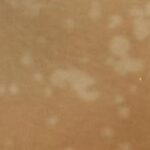As a common childhood condition, this year, millions of pediatric visits will involve childhood complaints of symptoms associated with ringworm. Unfortunately, for many children, an outbreak of the fungal infection, known as ringworm, may have persisted over a lengthy period of time, resulting in prolonged treatment. As parents, understanding the symptoms and treatment of childhood ringworm may assist in reducing the length of suffering and shorten the treatment in child sufferers.
Ringworm, medically known as Tinea, is a term that encompasses a fungal infection which can strike any place on the child’s body from the head to the feet. The most common train of thought lends the origin of ringworm to a fungal infection which may be acquired through close, direct contact with another child, adult or even a pet, or through indirect acquisition from use of towels, washcloths and clothing of another infected person. In most cases, symptoms appear within ten to 14 days of contact.
Children who suffer from ringworm generally exhibit symptoms which may begin as a small red bump, often resembling a mosquito bite, and then turning into a round, flat, pinkish dry patch. When struck with ringworm on the scalp, children will often exhibit areas of missing hair. This is especially true of children with fine or underdeveloped hair follicles. When left untreated, ringworm, in children, can result in a significant outbreak which may take months, even years, to cure.
When diagnosed with ringworm, also known as Tinea, the pediatrician will generally begin with a topical anti-fungal cream. If the ringworm condition appears to have spread rather quickly, is present on various areas of the body, or seems to be a moderate to severe case of ringworm, the child’s pediatrician may prescribe the anti-fungal in not only the topical cream but also in an oral prescription to be taken in liquid or tablet form.
Because ringworm is attributed to a bacterial infection, preventing the spread of ringworm is crucially important to the child’s health as well as the health of those who come in contact with the sick child. For children suffering from symptoms of ringworm, avoiding or abstaining from contact with all individuals, including the sharing of towels and washcloths, is crucial to preventing the spread of infection. In fact, to ensure proper control of the fungal infection, it is highly recommended other family members obtain preventative medical treatment as well to ensure the fungal infection is not spread throughout the family and to friends who may come in contact with family members.
When untreated, ringworm can lead to life long complications which may include a fungal infection which does not easily clear up, leading to potential scarring. For this reason, in rare cases when the fungal infection is quite significant in the child, the pediatrician may recommend frequent and regular office visits to closely monitor the progress of the infection. While this is rare, it is recommended that the parents caring for a child suffering from ringworm be open to the possibility of many office visits and significant medical costs associated with an advanced ringworm infection in a child.



